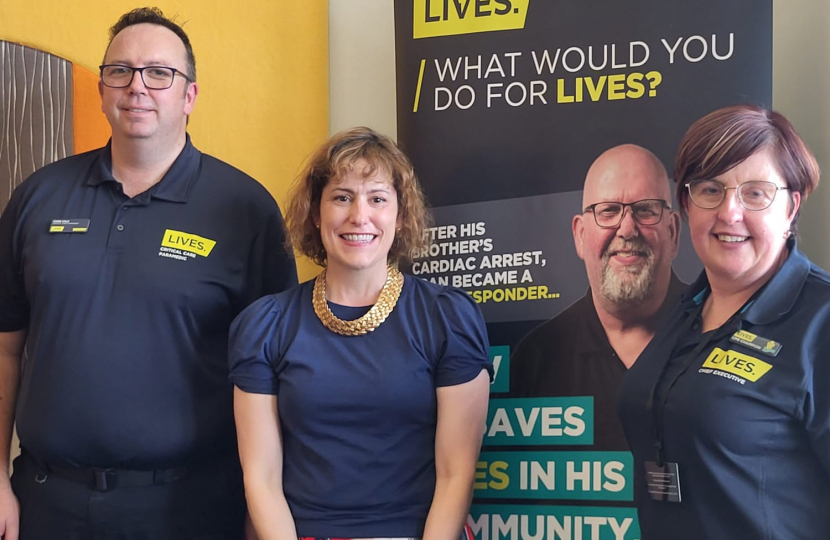
The Lincolnshire based emergency responder charity LIVES visited the Houses of Parliament this week to discuss its Community Strategy for reducing fatal cardiac arrests in the county.
I was delighted to host the visit so that information about the LIVES Community Strategy could be shared with other Members of Parliament from Lincolnshire.
The LIVES Community Strategy is based around maximising people’s chances of surviving a cardiac arrest. For every minute that your heart is stopped, your chance of survival decreases by 10%. So, if someone is nearby and able to confidently administer bystander CPR it can and has meant the difference of life or death.
LIVES mission is to equip communities with the skills and confidence they need to make a difference during these emergencies. To do this they want to develop a universal schools programme for providing school children with first aid training and bystander training for members of the community.
The visit included a presentation from Nikki Cooke, LIVES Chief Executive and a demonstration on how to administer bystander CPR by Chris Cole, Director of Operations. The pair also took questions from MPs and other representatives alongside Andrew Blackwood, the LIVES Director of Relationships.
LIVES do phenomenal work providing lifesaving emergency care in Lincolnshire and I am thrilled to be supporting their Community Strategy to expand this further.
I’d like to say a huge thank you to Nikki Cooke, Chris Cole and Andrew Blackwood from the LIVES team for coming to visit us in Parliament and sharing such important information and to fellow Members of Parliament who came and who support LIVES vital work.
The meeting was organised following my visit to the charity at their Horncastle base earlier in the year. On this previous visit, I was shown one of the charity’s lifesaving Critical Care Cars. These vehicles allow Critical Care Doctors and Critical Care Paramedics to respond on the road in serious medical emergencies when there isn’t time to reach the nearest trauma centre. This includes serious interventions such as sedating patients, performing life-saving surgical procedures, putting the patient into a medically induced coma or reducing serious fractures which could otherwise compromise circulation and even lead to amputation.

